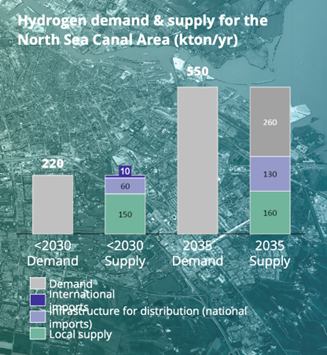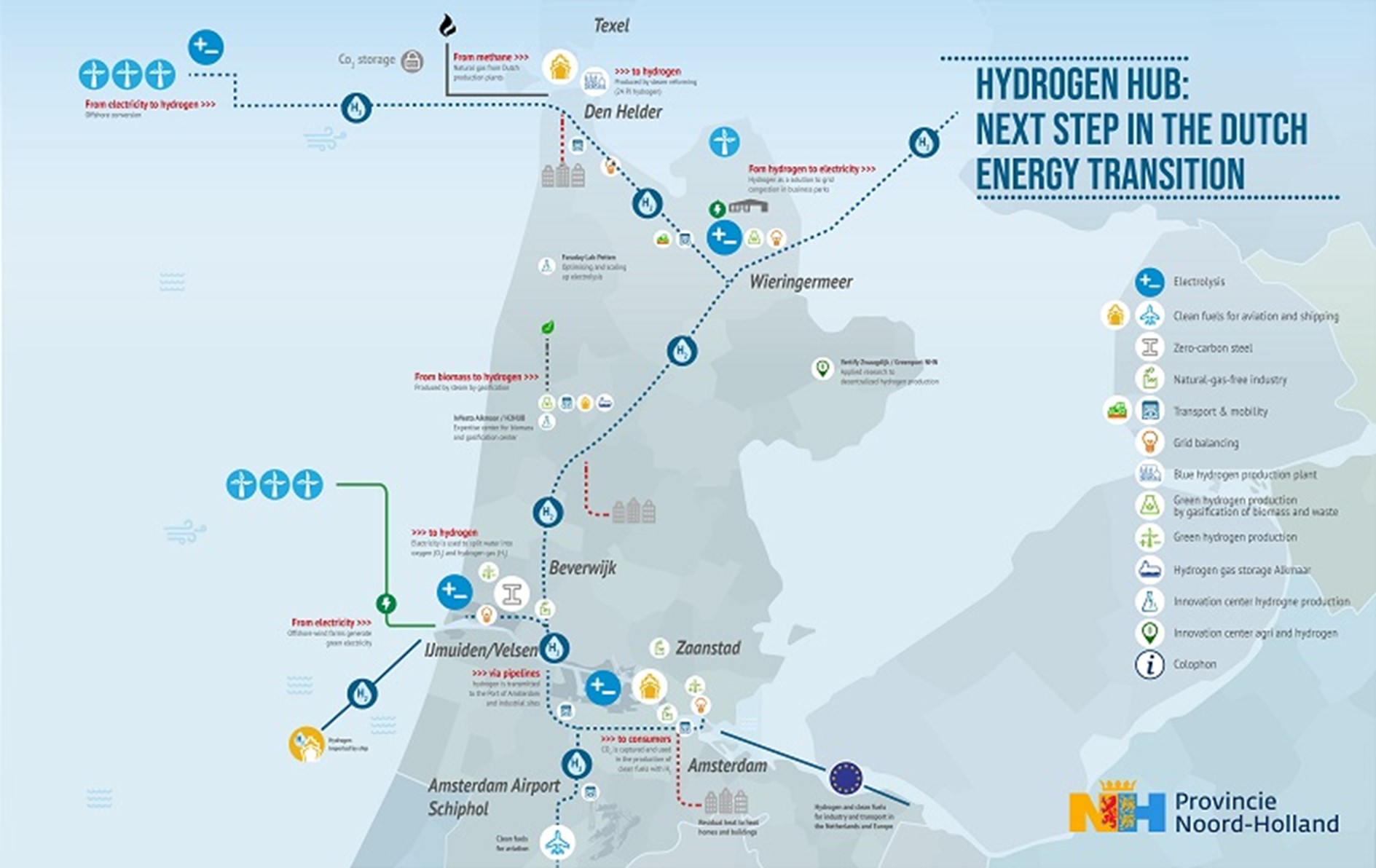Amsterdam: Pioneering the Green Hydrogen Import Value Chain
In the face of escalating climate change impacts, the transition towards renewable energy sources has become imperative. Among the various strategies to achieve decarbonization, the development of a green hydrogen import value chain in the North Sea Canal Area (NSCA) stands out as a critical and pioneering endeavour. Spearheaded by H2A Association, this initiative not only aims to bridge the gap between supply and demand for green hydrogen but also sets a precedent for sustainable energy transitions globally.
The Urgent Need for Green Hydrogen Import
The battle against climate change, underscored by the Paris climate goals, requires a significant reduction in carbon emissions. Several industries, particularly those with high energy demands that cannot be easily electrified, are facing the challenge of decarbonizing their operations. Green hydrogen, produced through the electrolysis of water using renewable energy sources, offers a viable solution as a green feedstock for these sectors. However, projections indicate a considerable gap between the anticipated demand for green hydrogen and the capacity for its domestic production within the Netherlands. This gap underscores the necessity for importing green hydrogen, a strategy that not only addresses the shortfall but also leverages the competitive pricing of green hydrogen produced in regions with lower green electricity costs.
The North Sea Canal Area: A Hub for Green Hydrogen Import
The NSCA is uniquely positioned to become a cornerstone in the green hydrogen import value chain. Its strategic location, coupled with the presence of major demand centres such as steel manufacturing, port activities, and aviation, creates a compelling case for establishing a robust import value chain. The anticipated demand for green hydrogen in the region is set to increase significantly, driven by commitments to green steel production, the decarbonization of port activities, and the development of sustainable aviation fuels (eSAF). These factors collectively highlight the critical role of the NSCA in the larger framework of the Netherlands’ energy transition.
Envisioning the Green Hydrogen Import Value Chain
The proposed value chain encompasses the entire lifecycle of green hydrogen, from its production in regions with favourable electricity pricing to its transport, storage, and distribution within the NSCA. The versatility in transport and storage methods, including gaseous compressed, liquid cooled, or bonded to hydrogen carriers like ammonia or methanol, exemplifies the complex logistics involved in establishing an efficient and reliable green hydrogen import value chain. The Port of Amsterdam is poised to play a pivotal role, leveraging its infrastructure and logistical capabilities to handle and store imported green hydrogen, ultimately distributing it to various end-users through pipelines, trucks, and barges.

Bron: Port of Amsterdam, Roland Berger (NB 260 in grey should be hard blue and cover international import)
Amsterdam’s Strategic Advantages as a Green Hydrogen Import Hub
Amsterdam’s selection as the nucleus of this value chain is not coincidental but a result of its many strategic advantages. The city’s progressive stance on decarbonization, combined with its established port and logistics infrastructure, makes it an ideal candidate for this pioneering role. The collaborative spirit among stakeholders, including terminal companies willing to innovate and invest in this new value chain, further solidifies Amsterdam’s position. Moreover, the anticipated connectivity to a comprehensive hydrogen infrastructure and the city’s pivotal role in serving the German industry underscore its suitability as a green hydrogen hub.
The Significance of Hydrogen Valley North-Holland
The recognition of North-Holland as a Hydrogen Valley by the European Commission is a significant milestone. This designation reflects the region’s commitment to developing a localized ecosystem for hydrogen production, distribution, import, and use. It epitomizes the collaborative spirit necessary for the large-scale adoption of green hydrogen, involving a broad spectrum of stakeholders from public and private sectors. The Hydrogen Valley serves as a model for how regional initiatives can contribute to national and international energy transition goals.
Looking Forward: Amsterdam’s Role in Shaping a Sustainable Future
The H2A Association’s initiative to develop a green hydrogen import value chain is a testament to the collaborative, innovative spirit required to tackle the challenges of climate change. As Amsterdam positions itself at the forefront of this endeavour, it not only addresses the immediate need for green hydrogen within the NSCA but also sets a benchmark for sustainable energy development worldwide. The success of this initiative could catalyse similar efforts across Europe and beyond, making Amsterdam a beacon of sustainable innovation and a leader in the global transition to renewable energy sources.
In conclusion, the development of a green hydrogen import value chain in the North Sea Canal Area, spearheaded by the H2A Association, is a critical step towards achieving decarbonization goals and ensuring a sustainable energy future. Amsterdam’s strategic advantages and the collaborative framework of the Hydrogen Valley North-Holland highlight the region’s potential to lead this transformative journey.

